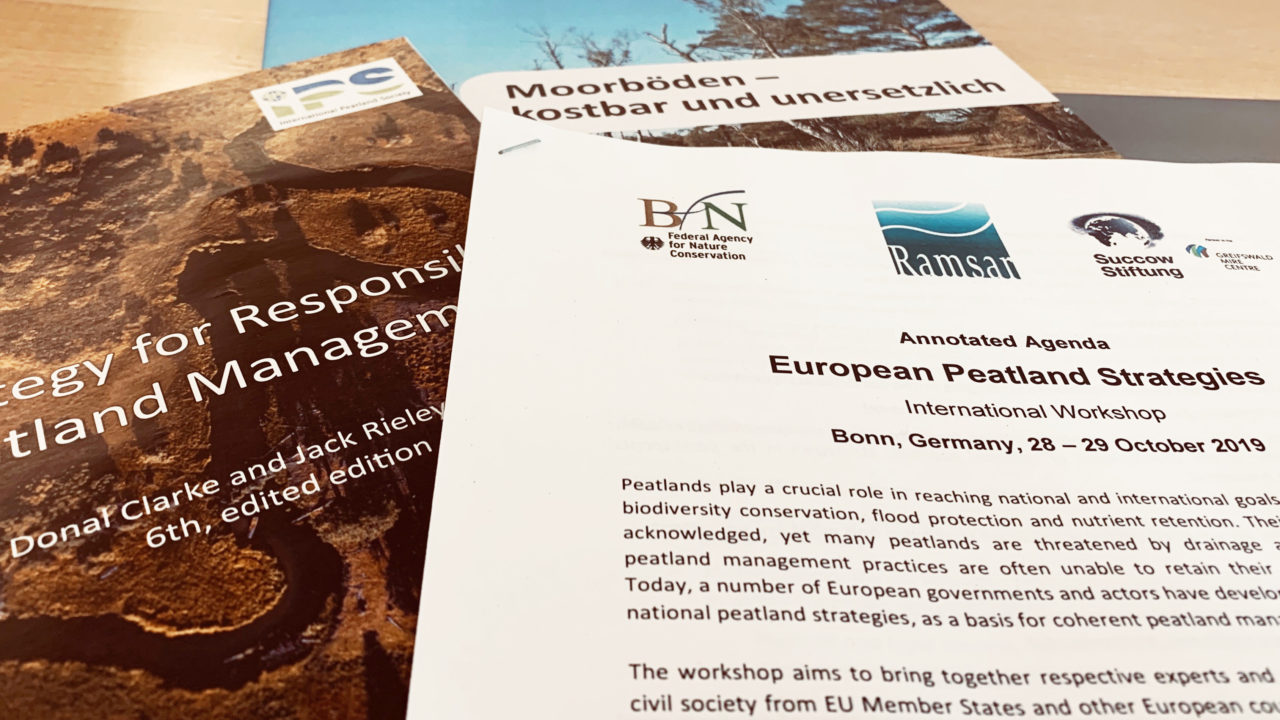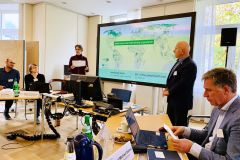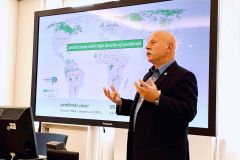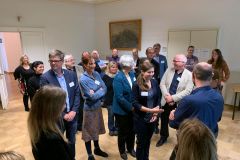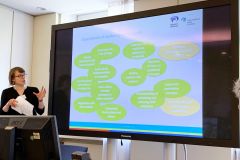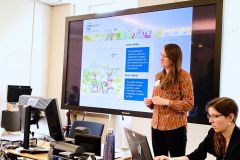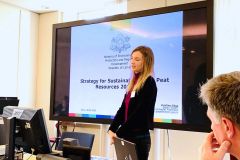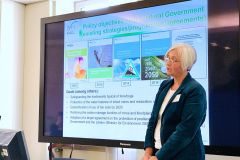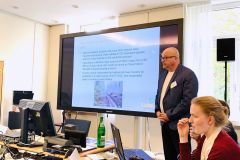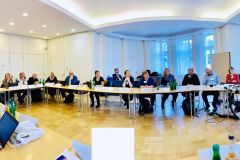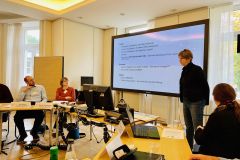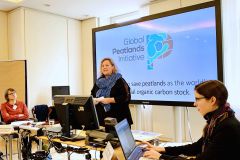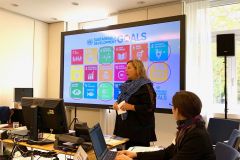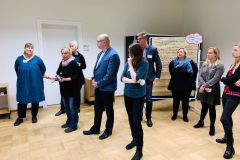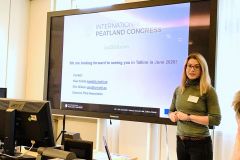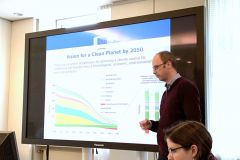International Workshop, Bonn, Germany, 28 – 29 October 2019
The German Federal Agency for Nature Conservation (BfN), Ramsar, Succow Stiftung and the Greifswald Mire Centre organised an European Peatland Strategy Workshop which brought together some 30 peatland experts and stakeholders from public sector and civil society from EU and other European countries. The aim was to review and exchange knowledge and experiences on existing and planned national peatland strategies, to identify core elements of national peatland strategies fostering best practices of peatland management including conservation, restoration and sustainable use. A second objective was to explore possible needs to integrate strategic peatland conservation at the European level and to discuss current practices and existing regulations.
Setting the Scene
Tobias Salathé from the Secretariat of the Ramsar Convention gave an introduction on peatlands in general, and European peatlands in particular. Agriculture and forestry are seen as the major cause of peatland related GHG emissions, thereby underlining the crucial role of peatlands in mitigating climate change, as well as their biodiversity, historical and archives value. One priority set by Ramsar Wetland Convention is to ensure that no pristine mires in Europe will be drained in the future, a priority that should be set out by any national strategy. National strategies are also considered of high importance for the implementation of the recently re-launched GAP (Guidelines for Global Action on Peatlands).
A panel discussion with Arthur Neher (Wetlands International) and Gilbert Ludwig (International Peatland Society) on “Why do we need national strategies and what are important preconditions?” was next on the program. There was a clear consensus between the panellists and the audience about the need of national strategies, as the heterogeneity in background, context, interest and, after all, the amount of peat and peatlands, between different countries represent strong challenges to the idea of a European wide strategy.
National strategies give peatlands the attention they need and deserve, but development and implementation imply clear goals and solid scientific basis, such as the “Wise Use”-concept1 and the STRP (Strategy for Responsible Peatland Management2). The panellists, however, also pointed out that national strategies and a European peatland “umbrella” strategy need not be mutually exclusive; it would raise attention on peatland related issues further and would highlight the fact that peatlands and peatland related issues go beyond political boundaries, as do the increasing share of international stakeholders and their businesses.
Sharing Experiences
In a second part speakers from different countries presented national strategies, or strategies in the doing or planning, of their respective country. Speakers where Francis Muller/France, Emma Goodyer/UK, Kristine Gaga/Latvia, Karin Ullrich/Germany and Mika Nieminen/Finland. The Finnish strategy was the first national peatland strategy in Europe and was largely founded on Wise Use & SRPM. The Finnish strategy (and later the Irish strategy), as also the Latvian strategy (in planning), are largely based on the concept of ecosystem services (as is SRPM), including provisioning services (to which belongs extraction of natural resources, such as peat), which sets them apart from other planned strategies that are largely conservation based.
Germany is a special case as several “Bundesländer” already have a strategy with varying objectives. A Federal peatland strategy, which is in the making, will push for complete protection of all German peatlands, organic soils and mire ecosystems, and includes integration of two (voluntary) strategies, a peat reduction strategy for the professional market, and a peat exit strategy for the consumer market. The elaboration of the new federal peatland strategy is expected by spring 2020.
Towards strong national strategies
On the second day Dianna Kopansky from UNEP/Global Peatlands Initiative gave a presentation on global perspective of peatlands, with a highlight on the UNEA Peatland resolution and its relevance for the development of national peatland strategies. A plenary discussion where core elements, challenges, success factors and formal requirement for strategy development where identified closed the second morning of the workshop
Peatland strategies and European policies
How to link peatland strategies to European regulatory frameworks? Jan Peters gave an overview on peatlands in the EU regulatory frame. Rene Colditz, from the European Commission (DG CLIMA) gave an eye-opening presentation on the complexity of implications of the LULUCF regulation (EU 2018/841) for peatlands in member states. Among many interesting aspects he presented possible pathways for achieving climate neutral EU, which he considered challenging, but feasible from technological, economic, environmental and social perspectives.
Among adaptation and mitigation response options proposed by IPCC, he highlighted two examples. Firstly, response options with immediate impact include conservation of high-carbon ecosystems such as peatlands, wetlands, rangelands, mangroves and forests. Secondly, he pointed out that land-based carbon sequestration options in soil or vegetation, such as afforestation, reforestation, agroforestry, soil carbon management on mineral soils, or carbon storage in harvested woods products do not continue to sequester carbon forever, but peatlands can continue to sequester carbon for centuries.
The final part of the workshop was dedicated to working group discussions on how to link peatland strategies to the respective European frameworks, especially regarding agriculture, climate protection, nature conservation, natural resources/energy production and water quality.
We are very thankful to the hosts for a well-organized, interesting and very dynamic European Peatland Strategy Workshop!
Dr. Gilbert Ludwig
Secretary General, International Peatland Society
1Joosten, H. & Clarke, D. 2002: Wise Use of Mires and peatlands. International Mires Conservation Group & International Peatland Scciety, 304 p.
2Clarke, D. & Rieley, J (eds.) 2019: Strategy for Responsible Peatland Management, 6th edition. International Peatland Society, 35 p.

